2-Methoxyethyl acetate
Synonym(s):1-Acetoxy-2-methoxyethane;2-Methoxyethyl acetate;Ethylene glycol monomethyl ether acetate;Ethylene glycol monomethyl ether acetate, O-Methyl glycol acetate, 3-Oxabutyl acetate, Acetic acid 2-methoxyethyl ester;Methyl Cellosolve acetate
- CAS NO.:110-49-6
- Empirical Formula: C5H10O3
- Molecular Weight: 118.13
- MDL number: MFCD00008719
- EINECS: 203-772-9
- SAFETY DATA SHEET (SDS)
- Update Date: 2025-12-17 09:50:35

What is 2-Methoxyethyl acetate?
Description
Methoxyethyl acetate is a colorless liquid with a mild, ether-like odor. Odor threshold= 0.33 ppm. Molecular weight= 118.15; Specific gravity (H2O:1)= 1.01;Boiling point=145℃; Freezing/Melting point=65℃; Vapor pressure= 2 mmHg at 20℃; Flash point=48.9℃ (cc); Autoignition temperature=380℃. Explosive limits: LEL= 1.7%; UEL= 8.2%. Hazard Identification (based on NFPA-704 M Rating System): Health 1, Flammability 2, Reactivity 0. Soluble in water.
Chemical properties
Methoxyethyl acetate is a colorless liquid. Mild, ethereal odor.
Chemical properties
CLEAR LIQUID
Physical properties
Colorless liquid with a mild, ether-like odor. Experimentally determined detection and recognition odor threshold concentrations were 1.6 mg/m3 (330 ppbv) and 3.1 mg/m3 (640 ppbv), respectively (Hellman and Small, 1974).
The Uses of 2-Methoxyethyl acetate
Industrial solvent.
The Uses of 2-Methoxyethyl acetate
Lacquer industry; textile printing; manufacture of photographic film, coatings, and adhesives
What are the applications of Application
2-Methoxyethyl acetate is a solvent and yeast inducing aneuploidy agent
General Description
A clear colorless liquid with a pleasant odor. Flash point of 135°F. Denser than water and soluble in water. Vapors are heavier than air.
Air & Water Reactions
Flammable. Water soluble. Reacts slowly in water to form acetic acid and methyl alcohol; the reaction is not violent.
Reactivity Profile
Esters react with acids to liberate heat along with alcohols and acids. Strong oxidizing acids may cause a vigorous reaction that is sufficiently exothermic to ignite the reaction products. Heat is also generated by the interaction of esters with caustic solutions. Flammable hydrogen is generated by mixing esters with alkali metals and hydrides.
Hazard
Toxic by ingestion, inhalation, and skin absorption. Moderate fire risk. Toxic by skin absorption.
Health Hazard
May cause irritation if splashed into eyes. Can be absorbed through the skin. Swallowing a large single dose or absorbing larged amount through skin could result in death. It is unlikely that air levels of the compound would be dangerous unless it is heated.
Fire Hazard
Special Hazards of Combustion Products: Irritating vapors and toxic gases, such as carbon monoxide, may be formed when involved in fire.
Safety Profile
Moderately toxic by ingestion, intraperitoneal, and subcutaneous routes. hfddly toxic by inhalation and skin contact. Human systemic effects by inhalation: eye lachrymation, cough, and pulmonary changes. Experimental reproductive effects. Mutation data reported. An inhalation irritant in humans. An eye irritant. Flammable liquid when exposed to heat or flame; can react with oxidizing materials. A moderate explosion hazard. To fight fire, use CO2, dry chemical. When heated to decomposition it emits acrid smoke and irritating fumes. See also GLYCOL ETHERS.
Potential Exposure
Methoxyethyl acetate is used as a solvent for resins, oils, greases and inks. It is also an ingredient of lacquers, paints and adhesives.
First aid
If this chemical gets into the eyes, remove any contact lenses at once and irrigate immediately for at least 15 min, occasionally lifting upper and lower lids. Seek medical attention immediately. If this chemical contacts the skin, remove contaminated clothing and wash immediately with soap and water. Seek medical attention immediately. If this chemical has been inhaled, remove from exposure, begin rescue breathing (using universal precautions, including resuscitation mask) if breathing has stopped and CPR if heart action has stopped. Transfer promptly to a medical facility. When this chemical has been swallowed, get medical attention. Give large quantities of water and induce vomiting. Do not make an unconscious person vomit. Medical observation is recommended for 2448 h after breathing overexposure, as pulmonary edema may be delayed. As first aid for pulmonary edema, a doctor or authorized paramedic may consider administering a corticosteroid spray.
Environmental Fate
Chemical/Physical. Hydrolyzes in water forming methyl cellosolve and acetic acid. At an influent concentration of 1,024 mg/L, treatment with GAC resulted in an effluent concentration of 886 mg/L. The adsorbability of the carbon used was 28 mg/g carbon (Guisti et al., 1974).
Storage
Color Code—Red: Flammability Hazard: Store in a flammable liquid storage area or approved cabinet away from ignition sources and corrosive and reactive materials. Prior to working with this chemical you should be trained on its proper handling and storage. Before entering confined space where this chemical may be present, check to make sure that an explosive concentration does not exist. 2-Methoxyethyl acetate must be stored to avoid contact with oxidizers (such as perchlorates, peroxides, permanganates, chlorates, and nitrates) and strong caustics, since violent reactions occur. Sources of ignition, such as smoking and open flames are prohibited where 2-methoxyethyl acetate is used, handled, or stored in a manner that could create a potential fire or explosion hazard. Wherever 2-methoxyethyl acetate is used, handled, manufactured, or stored, use explosion-proof electrical equipment and fittings.
Shipping
UN1189 Ethylene glycol monomethyl ether acetate, Hazard Class: 3; Labels: 3-Flammable liquid.
Purification Methods
Shake the methoxy-ethane with anhydrous Na2CO3, filter and distil it in a vacuum. Redistillation can be then be carried out at atmospheric pressure. [Dunbar & Bolstad J Org Chem 21 1041 1956, Beilstein 2 IV 214.]
Incompatibilities
Forms explosive mixture with air. Strong oxidants, strong bases, strong acids, and nitrates. May be able to form explosive peroxides.
Waste Disposal
Dissolve or mix the material with a combustible solvent and burn in a chemical incinerator equipped with an afterburner and scrubber. All federal, state, and local environmental regulations must be observed. Beware of possible presence of peroxides in which case open burning may be used
Properties of 2-Methoxyethyl acetate
| Melting point: | −65 °C(lit.) |
| Boiling point: | 145 °C(lit.) |
| Density | 1.009 g/mL at 25 °C(lit.) |
| vapor pressure | 4.7 hPa (20 °C) |
| refractive index | n |
| Flash point: | 111 °F |
| storage temp. | Store below +30°C. |
| solubility | Soluble in alcohol and ether (Weast, 1986). |
| form | Solid |
| color | White |
| explosive limit | 1.7-8.8%(V) |
| Water Solubility | Miscible (Lyman et al., 1982) |
| λmax | λ: 254 nm Amax: 1.00 λ: 275 nm Amax: 0.15 λ: 300 nm Amax: 0.05 λ: 350-400 nm Amax: 0.01 |
| Merck | 14,6039 |
| BRN | 1700761 |
| Henry's Law Constant | (x 10-6 atm?m3/mol):
3.28 at 30.00 °C (headspace-GC, Hovorka et al., 2002) |
| Exposure limits | NIOSH REL: TWA 0.1 ppm (0.5 mg/m3), IDLH 200 ppm; OSHA PEL: TWA
25 ppm (120 mg/m3); ACGIH TLV: TWA 5 ppm (24 mg/m3). |
| CAS DataBase Reference | 110-49-6(CAS DataBase Reference) |
| EPA Substance Registry System | Ethylene glycol monomethyl ether acetate (110-49-6) |
Safety information for 2-Methoxyethyl acetate
| Signal word | Danger |
| Pictogram(s) |
 Flame Flammables GHS02  Exclamation Mark Irritant GHS07  Health Hazard GHS08 |
| GHS Hazard Statements |
H226:Flammable liquids |
| Precautionary Statement Codes |
P210:Keep away from heat/sparks/open flames/hot surfaces. — No smoking. P280:Wear protective gloves/protective clothing/eye protection/face protection. P301+P312:IF SWALLOWED: call a POISON CENTER or doctor/physician IF you feel unwell. P303+P361+P353:IF ON SKIN (or hair): Remove/Take off Immediately all contaminated clothing. Rinse SKIN with water/shower. P308+P313:IF exposed or concerned: Get medical advice/attention. |
Computed Descriptors for 2-Methoxyethyl acetate
2-Methoxyethyl acetate manufacturer
R J Organics
New Products
4,4-Difluoropiperidine hydrochloride tert-butyl 9-methoxy-3-azaspiro[5.5]undecane-3-carboxylate Indole Methyl Resin N-Isopropylurea N,N-Dicyclohexylcarbodiimide(DCC) MELDRUMS ACID 5-METHYLISOXAZOLE-4-CARBOXYLIC ACID Magnessium Bis glycinate Zinc ascorbate 1-bromo-2-butyne 2-acetamidophenol 9(10H)-anthracenone Erythrosin B, 4-Piperidinopiperidine 2-((4-morpholinophenylamino) (methylthio) methylene) malononitrile 2,4-dihydroxybenzaldehyde 3-(4-morpholinophenylamino)-5-amino-1H-pyrazole-4-carbonitrile Methyl 2-methylquinoline-6-carboxylate 2,6-dichloro-4-nitropyridine 4-Bromo-2-chlorobenzonitrile 2-(benzylamino)acetic acid hydrochloride 4-(tert-Butoxycarbonylamino)but- 2-ynoic acid 3,4-dihydro-2H-benzo[b][1,4]dioxepine 1-Phenyl-1-cycloprppanecarboxylicacidRelated products of tetrahydrofuran
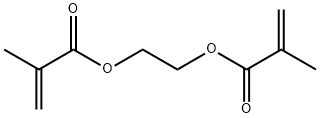

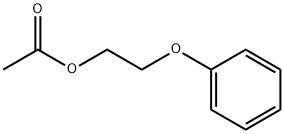
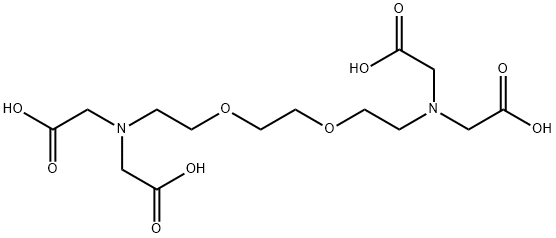

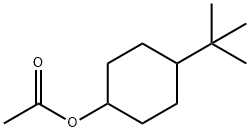
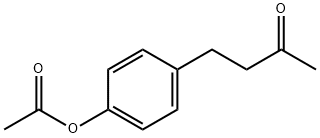

You may like
-
 110-49-6 Ethyleneglycol monomethyl ether acetate 99%View Details
110-49-6 Ethyleneglycol monomethyl ether acetate 99%View Details
110-49-6 -
 110-49-6 99%View Details
110-49-6 99%View Details
110-49-6 -
 2-Methoxyethyl Acetate CAS 110-49-6View Details
2-Methoxyethyl Acetate CAS 110-49-6View Details
110-49-6 -
 2-Methoxyethyl acetate CAS 110-49-6View Details
2-Methoxyethyl acetate CAS 110-49-6View Details
110-49-6 -
 3-(4-amino-1-oxoisoindolin-2-yl)-1-methylpiperidine-2,6-dione 98%View Details
3-(4-amino-1-oxoisoindolin-2-yl)-1-methylpiperidine-2,6-dione 98%View Details -
 20677-73-0 (2,2-diethoxyethyl)methylamine 98%View Details
20677-73-0 (2,2-diethoxyethyl)methylamine 98%View Details
20677-73-0 -
 3-(4-(hydroxyamino)-1-oxoisoindolin-2-yl)piperidine-2,6-dione 98%View Details
3-(4-(hydroxyamino)-1-oxoisoindolin-2-yl)piperidine-2,6-dione 98%View Details -
 57381-49-4 2-bromo-4-chlorobenzonitrile 98%View Details
57381-49-4 2-bromo-4-chlorobenzonitrile 98%View Details
57381-49-4
